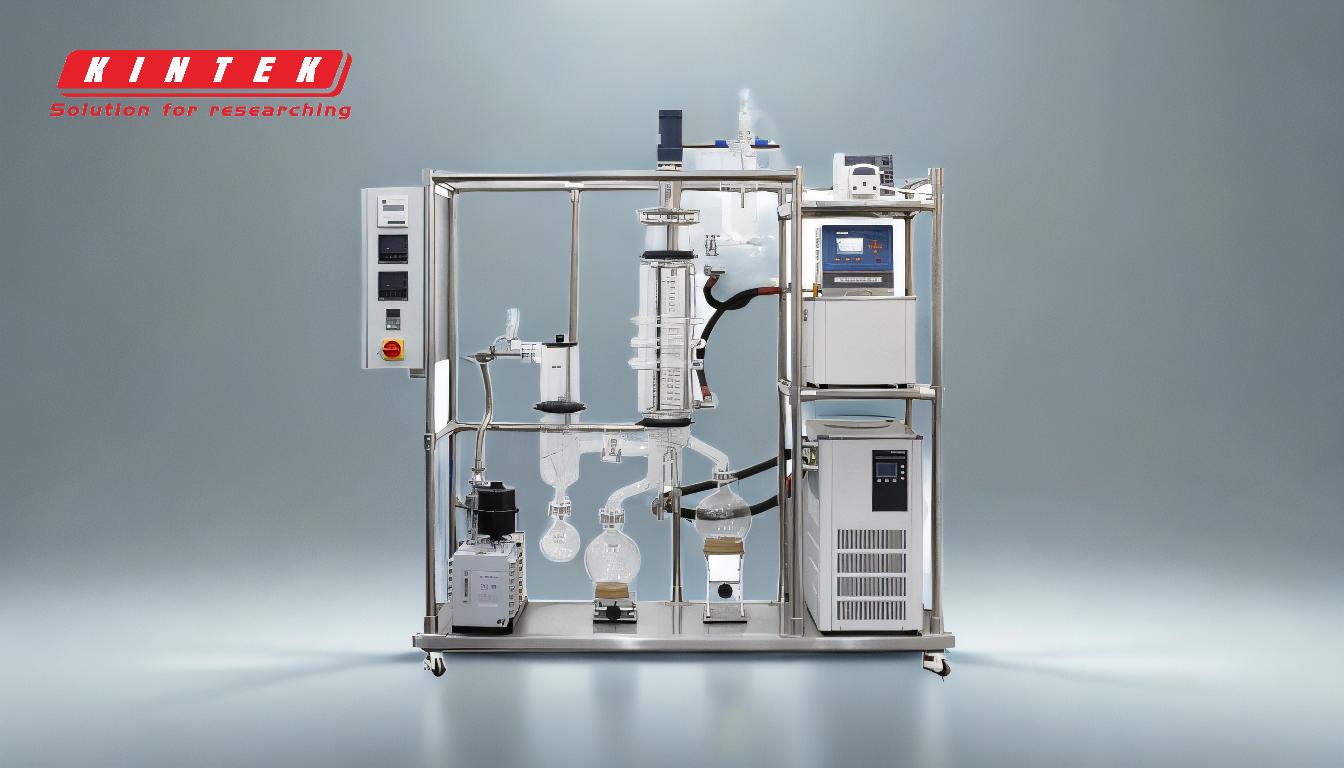Simple distillation is an effective method for separating liquids, particularly when the components have significantly different boiling points, typically differing by at least 25°C to 70°C. This process involves heating the mixture to its boiling point, allowing the component with the lower boiling point to vaporize first. The vapors are then condensed back into liquid form, resulting in the separation of the components. However, its effectiveness diminishes when dealing with liquids that have closer boiling points, as the separation becomes less distinct. In such cases, fractional distillation is more suitable. Simple distillation is widely used in laboratories and industries for its simplicity and efficiency in separating mixtures with distinct boiling points.
Key Points Explained:

-
Principle of Simple Distillation:
- Simple distillation works on the principle of differences in boiling points of the liquids in a mixture. When the mixture is heated, the component with the lower boiling point vaporizes first. The vapors are then condensed back into a liquid, effectively separating it from the other components.
-
Effectiveness Based on Boiling Point Difference:
- The method is most effective when the boiling points of the liquids differ significantly. References suggest a minimum difference of 25°C to 70°C for effective separation. This ensures that the components vaporize at distinct temperatures, allowing for clear separation.
-
Process of Simple Distillation:
- Heating: The mixture is heated to the boiling point of the component with the lower boiling point.
- Vaporization: This component vaporizes and rises through the distillation apparatus.
- Condensation: The vapors are cooled and condensed back into a liquid, which is collected as the distillate.
- Temperature Adjustment: As the lower boiling point component is removed, the temperature of the mixture increases to the boiling point of the next component, repeating the process.
-
Applications of Simple Distillation:
- Laboratory Use: Commonly used in chemistry labs for purifying liquids and separating mixtures with distinct boiling points.
- Industrial Use: Employed in industries for processes like water purification, alcohol production, and essential oil extraction.
-
Limitations of Simple Distillation:
- Close Boiling Points: If the boiling points of the liquids are too close (less than 25°C difference), simple distillation may not effectively separate the components. Fractional distillation is preferred in such cases.
- Purity: The distillate may not be completely pure if there is any overlap in the boiling points of the components.
-
Comparison with Fractional Distillation:
- Simple Distillation: Suitable for mixtures with a significant difference in boiling points. It is simpler and requires less complex equipment.
- Fractional Distillation: More effective for mixtures with closer boiling points. It uses a fractionating column to provide multiple vaporization-condensation cycles, enhancing separation.
-
Practical Considerations:
- Equipment: Simple distillation requires basic equipment like a distillation flask, condenser, and receiving flask.
- Safety: Proper handling of heat sources and flammable liquids is crucial to prevent accidents.
- Efficiency: The efficiency of simple distillation can be influenced by factors like the rate of heating, the design of the distillation apparatus, and the initial concentration of the components.
In summary, simple distillation is an effective and straightforward method for separating liquids with significantly different boiling points. Its simplicity and efficiency make it a preferred choice in various applications, though it has limitations when dealing with mixtures of closely boiling liquids.
Summary Table:
| Aspect | Details |
|---|---|
| Principle | Separates liquids based on differences in boiling points. |
| Effectiveness | Requires a boiling point difference of 25°C to 70°C for clear separation. |
| Process | Heating, vaporization, condensation, and temperature adjustment. |
| Applications | Used in labs and industries for water purification, alcohol production, etc. |
| Limitations | Less effective for liquids with boiling points closer than 25°C. |
| Comparison | Simpler than fractional distillation but less effective for close BPs. |
| Equipment | Distillation flask, condenser, and receiving flask. |
Need help with distillation processes? Contact our experts today for tailored solutions!









